| 1 | China’s main cobra |
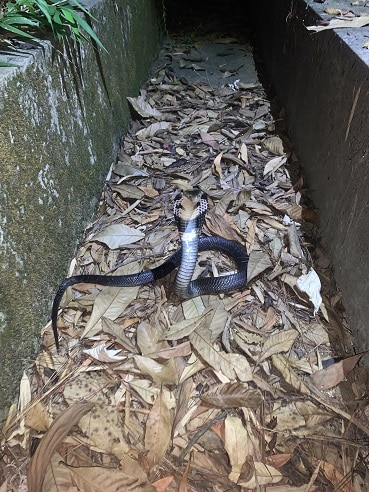
China is home to a handful of cobras, as the monocled cobra and brown-banded cobra both occupy small areas of the country’s far south. However, by far the most common species in the country is the namesake Chinese cobra (Naja atra). This species is abundant all over the south of China, particularly in Hainan and Guangdong provinces. It’s also found in northern Vietnam, northern Laos, Taiwan, and the busy streets of Hong Kong.
Chinese cobras are immensely flexible in their habitats. You can step on this snake in a grassy field, you can spy one in a woodland (except the deepest, darkest forests), and you can encounter one at altitudes of 1000 metres and more. They also appear in towns and cities far more than most snakes.
In Hong Kong, there were 1641 recorded cases of Chinese cobras entering people’s homes from January 2002 to December 2016. This was less than the non-venomous oriental ratsnake at 2415, but easily more than the white-lipped pitviper (1164), red-necked keelback (701), and copperhead racer (607).
With a mixture of hemotoxins and cardiotoxins, Chinese cobras more than capable of killing human beings. Making matters worse, they’re more than willing to attack.
| 2 | High venom toxicity |
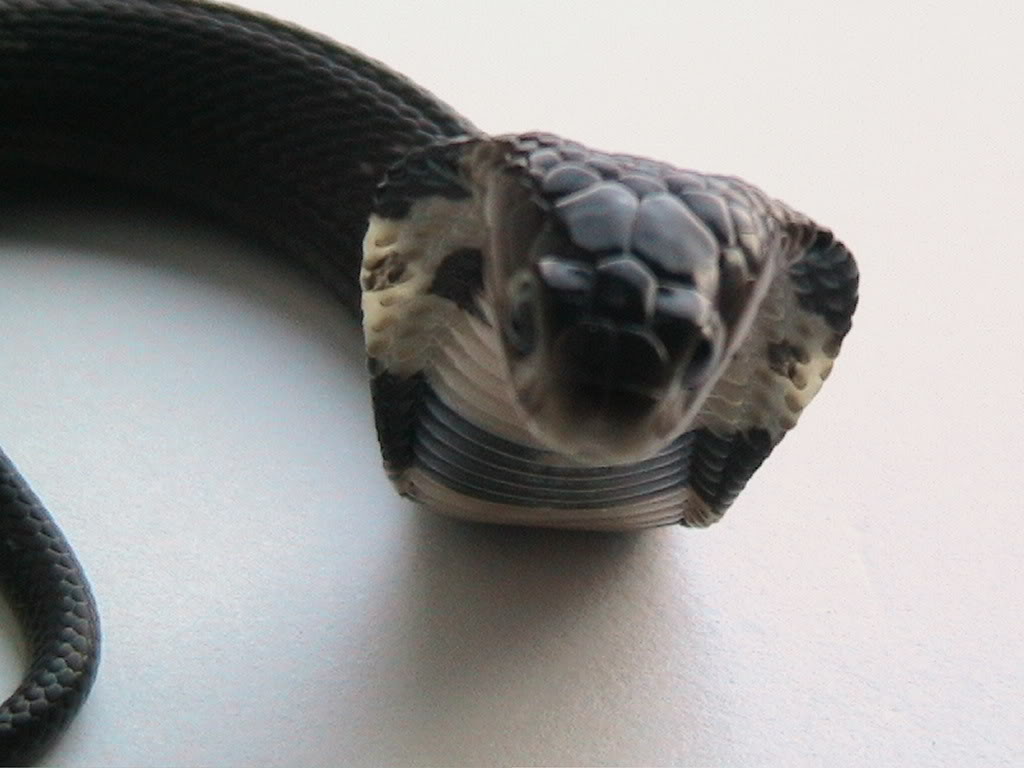
Chinese cobras have a nasty venom which was once estimated to have a 15% mortality rate in Taiwan. 593 people were known to be bitten from 1904 to 1938, and of those bites 87 were fatal. The species also causes the majority of snake bites in Hong Kong alongside the white-lipped pitviper.
Its venom falls short of the inland taipan in terms of raw potency, with an LD50 rating of 0.27mg versus 0.025mg (the world’s deadliest). But among 25+ species of true cobra (which king cobras aren’t included in), the Chinese cobra ranks sixth, with the top 3 being the Samar cobra (0.21mg), Philippine cobra (0.14mg), and Caspian cobra (0.10mg).
Its venom yield is a moderately high 150-300mg, compared to the forest cobra with an average of 571mg and an earth-shattering world record of 1102mg. The Philippine cobra and Caspian cobra boast 90-100mg and 75-125mg respectively – more potent venom, but in slightly small quantities.
Overall, Naja atra is a slightly deadlier cobra than average.
| 3 | Humans seem to be resistant |

Scientists have mapped out the toxin profile of the Chinese cobra, and found a makeup of 63% cardiotoxins, 41% hemotoxins, 15% phospholipase A (a cytotoxin), and 3% neurotoxins. A separate study found 15% neurotoxins, yet the interesting thing is that in humans, Chinese cobras rarely cause neurotoxic symptoms. It’s the exact opposite in mice, which experience paralysis, muscle weakness, and drooping eyelids.
Consequently, many believe that humans have innate resistant to Chinese cobra neurotoxins. There’s another example in Australia, with the red-bellied black snake. This species produces α-elapitoxin, a neurotoxin which wreaks havoc on mice yet is detoxified from the human body within 6 minutes. This is the advantage of not being the species’ main prey, just a tall, looming “predator” to be deterred.
That said, there’s one ingredient which nobody is safe from. The Chinese cobra’s mouth is notoriously infected with bacteria, more so than most other cobra species. The venom lacks the normal metalloproteinases for dissolving cells around the wound (thus allowing higher venom entry), but instead there’s the infectious Morganella morganii and Enterococcus faecalis to contend with. These microorganisms can cause severe infections, on top of the necrosis and swelling.
| 4 | Notorious for necrosis |
A detailed study from 2004-2009 examined 15 Chinese cobra survivors, most of whom received antivenom within hours. In 11 of 15 cases, the symptoms began with a strong tingling, and in three people, this tingling spread from the finger to eventually cover the entire arm.
Two of the patients suffered from gastro-intestinal symptoms like nausea and vomiting, and 14 had severe swelling around the bite mark. Necrosis was by far the most consistent of the severe symptoms, with extensive rotting flesh and cell death in 6 of the 15 patients. Some of the patients required skin grafts, including patient 14, who was bitten on the ankle and spent 2 months in a rehabilitation ward.
On a happier note, the venom rarely causes muscular necrosis. It’s mostly limited to the shallow skin layers, partly because the Chinese cobra has relatively short fangs. None of the 15 patients experienced cardiovascular problems or blood pressure falls. Most Chinese hospitals have a ready supply of antivenom on hand for this species, and none of the 15 patients experienced allergic reactions.
| 5 | Comfortable in urban areas |
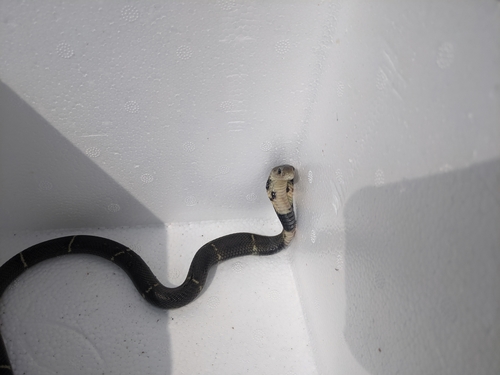
Chinese cobras are average length for their family, falling within 1.2-1.5 metres, with the longest recorded being two metres. This falls short of the African forest cobra (1.4-2.2 metres), but sails past the Mozambique spitting cobra at 90-105cm.
Chinese cobras have an almost completely black lower body. Around the mid-section, white or cream scales begin to appear, like the markings of a cow. Their chin and neck are cream-coloured, and the back of their head has an odd marking designed to deceive predators. This marking is the Chinese cobra’s ultimate ID method. In Indian cobras the deceptive marking looks like a happy face, with two circles and a bendy line. In Chinese cobras, it looks more like a bat symbol, or even the eyes and nose of a koala bear.
Chinese cobras have the signature neck flare of all cobras, and its eyes are dirty yellow with a round black pupil. Some believe that Chinese cobras are becoming endangered, as local villagers commonly hunt them for medicine or as an ingredient in snake soup. 30 years ago, the Chinese cobra was everywhere, but its numbers have fallen sharply in Guangdong and Hainan provinces. An advantage Chinese cobras have is their immense flexibility in habitats. As many images show, they happily slither down pavements, roads, and through water culverts without their natural instincts telling them to retreat.
| 6 | Eats almost anything |
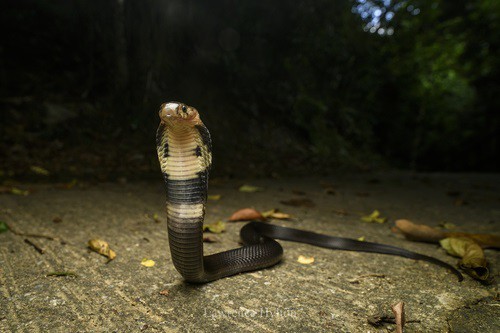
Chinese cobras can extract calories from almost anything, including mammals, birds, lizards, amphibians and small fish. A specific species they’re confirmed to eat is Duttaphrynus melanostictus, AKA the Asian common toad.
This frog is a stony brown colour and looks like the ominous frog of a dark European fairy tale. It’s 20cm long, easy for the Chinese snake to devour. It commonly ventures into towns and hangs out below street lights, and its body secretes a milky white toxin called bifidotoxin. In Australia, it’s an invasive species, and there’s fears that the toxins could wipe out native snakes which aren’t adapted to them, but having evolved alongside them, the Chinese cobra is well adapted to those toxins.
Another prey is the rice field frog (Fejervarya limnocharis), which inhabits the Vietnamese and northern Laos parts of its range. This 20cm frog likes to hang out in paddy fields, crop fields which are semi-flooded regularly, and are heavily used for rice growing.
| 7 | A spitter that isn’t a spitter |
Naja atra isn’t part of “true” spitting cobra family, but for decades, rumours persisted in China and Taiwan that it was able to spit anyway. These spitty tendencies are now confirmed, as is their tendency to target the eyes.
The Chinese cobra’s first move is coiling itself up after detecting an aggressor. It springs from the ground in classic cobra fashion, and once its long body is at a 45 degree angle from the ground, it tilts its neck back and opens its mouth wide. Once its fangs are completely parallel to the earth and no less, the Chinese cobra sprays the venom towards the predator using holes in the bottom front of its fangs.
Unlike true spitting cobras, the Chinese cobra cannot shoot its venom upwards, so without this intricate manoeuvre the venom would splash to the ground uselessly, defeated by the forces of gravity. There are cases of blindness from spitting Chinese cobras, as well as ulcers. Snake experts recommend washing infected eyes with water immediately after being sprayed. Eyes are delicate organs and in one case, doctors sloshed antivenom all over the spray victim’s eyes, praying for her recovery, which indeed came without lasting side effects.
| 8 | Briefly blamed for COVID-19 |
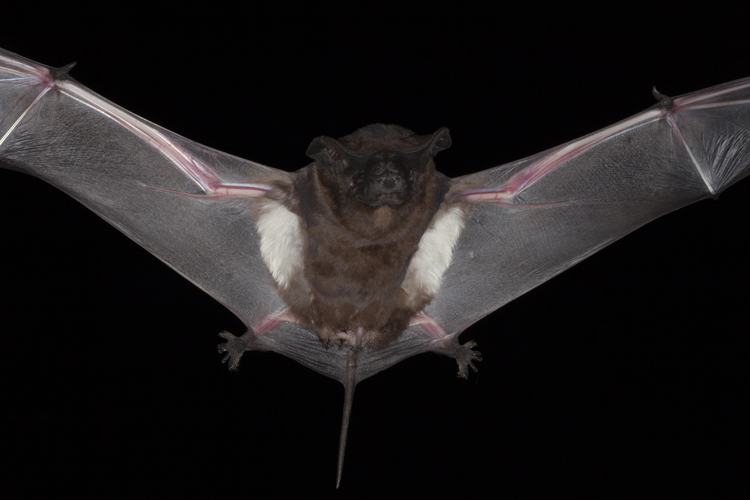
During the early period of confusion in January 2020 when nobody was sure where the coronavirus came from or how infectious it really was, one of the many names bandied around by Chinese scientists was the Chinese cobra.
The infamous Wuhan seafood market was believed to be the epicentre of the first breakout in December, a place where villagers sell exotic meats including pointy-nosed pangolins and bats from remote caves. Snake meat was also sold there, and in a controversial study released on January 22nd, researchers claimed that a triplet of DNA nucleotides which created amino acids in the cobra, called a codon, seemed to be the optimal shape for a coronavirus to attach to.
Proponents theorised that the snake had become infected at a disease-filled bat cave and slithered into the arms of a hunter, being an intermediary passenger for the disease. The many-banded krait was also suggested as a candidate. Western scientists criticised the study the next day, saying that there was no solid evidence pointing to snakes, that it was just one possible element of one possible theory.
| 9 | The two-headed form |
The condition of having two heads is known as Polycephaly, and snakes are the most common animal family to have it. In 2020, Chinese cobras were given their chance at the two headed roulette, as a snake breeder known only as Mr Huang found one in the corner of his reptile farm in Yulin, southern China.
It was 10 days old, and the heads were divided one third of the way down the body so that each personality could move its neck and head independently, even swaying back and forth. It wasn’t one snake, but two which had failed to separate in the womb, with two personalities. The two heads even attempted to bite each other, and tried to slither in different directions, not comprehending their their fates would be forever intertwined if by a miracle they managed to survive.
Despite not eating or drinking, the one-bodied twin snakes continued to grow after 10 days. Mr Huang handed the cobra over to reptile experts at Nanning Zoo, hoping that they could persuade them to eat. At this point, the double snake had already shed its skin once.
| 10 | Fast, hyper and aggressive |
The Chinese cobra is a hyper alert snake, always on top of things and never waiting in immobile ambush for weeks at a time like the puff adder. The downside is an extremely aggressive personality when confronted, particularly in younglings. Chinese cobras usually attempt to flee when they hear the stomping boots of humans, but not with desperation. If need be, they’ll coil up and hiss loudly to deter the surprised walkers. They’ll pounce at the air in a bluff strike, and their speed when they finally unleash the real strike is extreme.
A study once gathered 18 Chinese cobra bite victims, and found that 78% occurred between August and November. 72% occurred during daylight, between 6:00 and 17:59, and more disturbingly, 44% of Chinese cobra bites happened indoors.
There was no correlation with the activities of bite victims. They could have been walking, farming, washing the dishes, crossing the road, hiking. To put it in simple terms – you cannot escape from the Chinese cobra. Most bites landed on the legs and feet, but they can also strike the hands as people bend over to forage or harvest crops (like the Russell’s viper of India).
